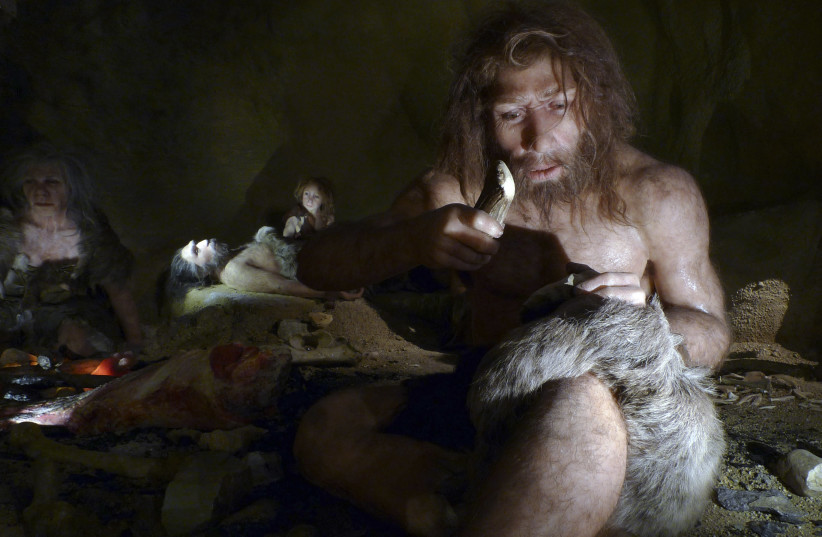Early Neanderthals lived in different communities bound together by families but were still linked to one another, thanks to female Neanderthals migrating to different communities and adding to the genetic diversity, a new study in Nature has found.
The findings of this peer-reviewed study shed light on the social organization and structure of Neanderthal communities and families, how they lived and who moved around.
Overall, this is one of the largest genetic studies of a Neanderthal population to date.
Neanderthals: Pre-human ancestors of Europe
The early hominid species known as Neanderthals once lived throughout western Eurasia, as far east as the Altai Mountains of Siberia, with evidence suggesting they lived there from around 430,000 years ago until 40,000 years ago when they went extinct.

But what were their family units like? What were their communities like? These are questions the scientists behind the study sought to answer.
To do this, they analyzed genetic data from 13 different Neanderthals in the Altai Mountains, 11 of Chagyrskaya Cave and two from Okladnikov Cave. This helped paint a better picture of the genetic relationships and social organization of these communities.
There is already quite a bit of information scientists know about Neanderthals. We know that Neanderthals lived in small communities. We also know that Neanderthals co-existed with their ancestors, the Denisovans.
Another recently published academic study also determined that Neanderthals even co-existed with early humans, Homo sapiens. This happened for a relatively short period of time, as there are just a few thousand years of overlap between when humans and Neanderthals both lived in Europe.
Plenty of evidence supports this, too. In fact, research by Nobel Prize winner and renowned geneticist Svante Paabo, claimed that Europeans carry a small percentage of Neanderthal DNA.
Other examples of co-existence can also be seen in other areas, where early humans were known to mix with their common relatives.
But how did Neanderthals live among themselves?
The sites examined in this study are both within 100 kilometers of Denisova Cave, where the Denisovans were known to be from.
From evidence at the site, the researchers determined a surprising amount of information about these early communities.
As the study noted, the Neanderthals here hunted a number of migratory animals such as horses, bison and ibex. They built stone tools from raw materials they collected.
Not only that, but some of the same material used in the stone tools were found at both sites. This, in turn, would imply that the two Neanderthal communities were in some way linked.
Earlier Neanderthals seem to have lived in the Altai Mountains thousands of years before them. However, it doesn't seem they were the ancestors of the two Neanderthal communities observed in Chagryskaya and Okladnikov. It seems that these Neanderthals were far more European.
How do we know this? Thanks to the tools. Specifically, the stone tools found in Chagyrskaya are extremely similar to the tools of the Micoquian culture from Central and Eastern Europe.
But what about genetics?
But on a genetic level, there's also a lot more that we have learned about the Neanderthals. Specifically, the 13 individuals were seven men and six women, eight adults and five children.
The researchers were also able to determine that some of these Neanderthals were related, such as a father and daughter and what may be cousins.
What was also found were DNA traces, which included mitochondrial DNA. Here, the researchers found something interesting: Heteroplasmies. These are special kinds of genetic variants when two or more mitochondrial DNA variants exist in the same cell. As these are genetic, this means that they stay in the same family, further reinforcing that these Neanderthals were related.
But another quirk about heteroplasmies is that they usually only stay around for a couple of generations. The fact that these Neanderthals were seemingly related and had heteroplasmies means that it is incredibly likely that they all lived and died around the same time.
And the reason that is so exciting is that it means these Neanderthals all must have likely came from the same social community.
In other words, this is a first-of-its-kind study that uses genetics to study how a Neanderthal community is organized.
But having said that, the study also revealed that this community had incredibly low genetic diversity, something usually only seen among species about to go extinct.
But despite this, Neanderthals, while maybe living in these separate groupings, were not completely isolated. Indeed, we know that some must have moved between communities.
But who exactly did the moving? Was it the male or female Neanderthals?
This is something the researchers were able to answer thanks to studying two distinct things: the Y-chromosome and the mitochondrial DNA. The former are inherited from father-to-son, whereas mitochondrial DNA comes from the mother. By studying the diversity of these two factors, it could answer whether men or women moved.
And the answer was that the mitochondrial DNA had more diversity. In other words: It was the women that migrated between Neanderthal communities, linking them together. And furthermore, this is something they did themselves, whereas the Denisovans seemingly did not.
Of course, the study's findings do raise an interesting question: How much do they reflect Neanderthals as a whole, or are they simply reflective of the Neanderthals of the Altai Mountains, the very extreme fringe of Neanderthal presence in Eurasia?
This is something future research will have to answer.
